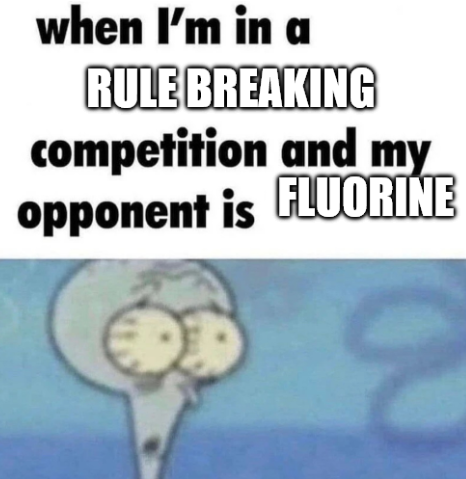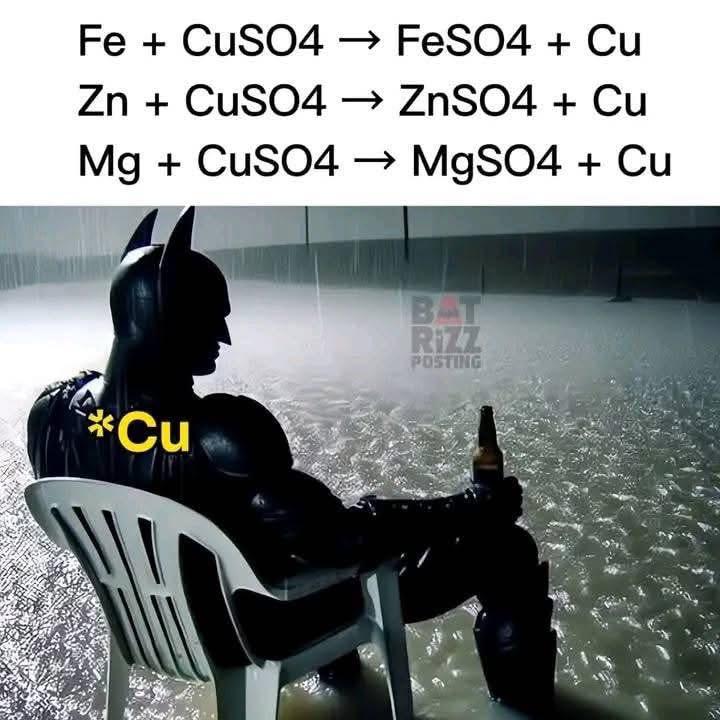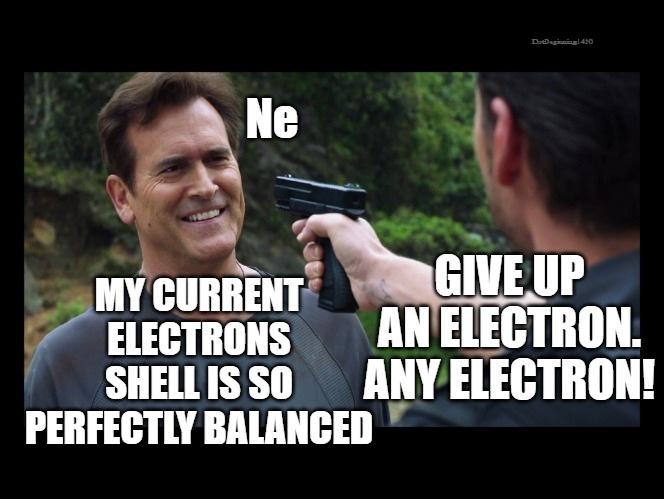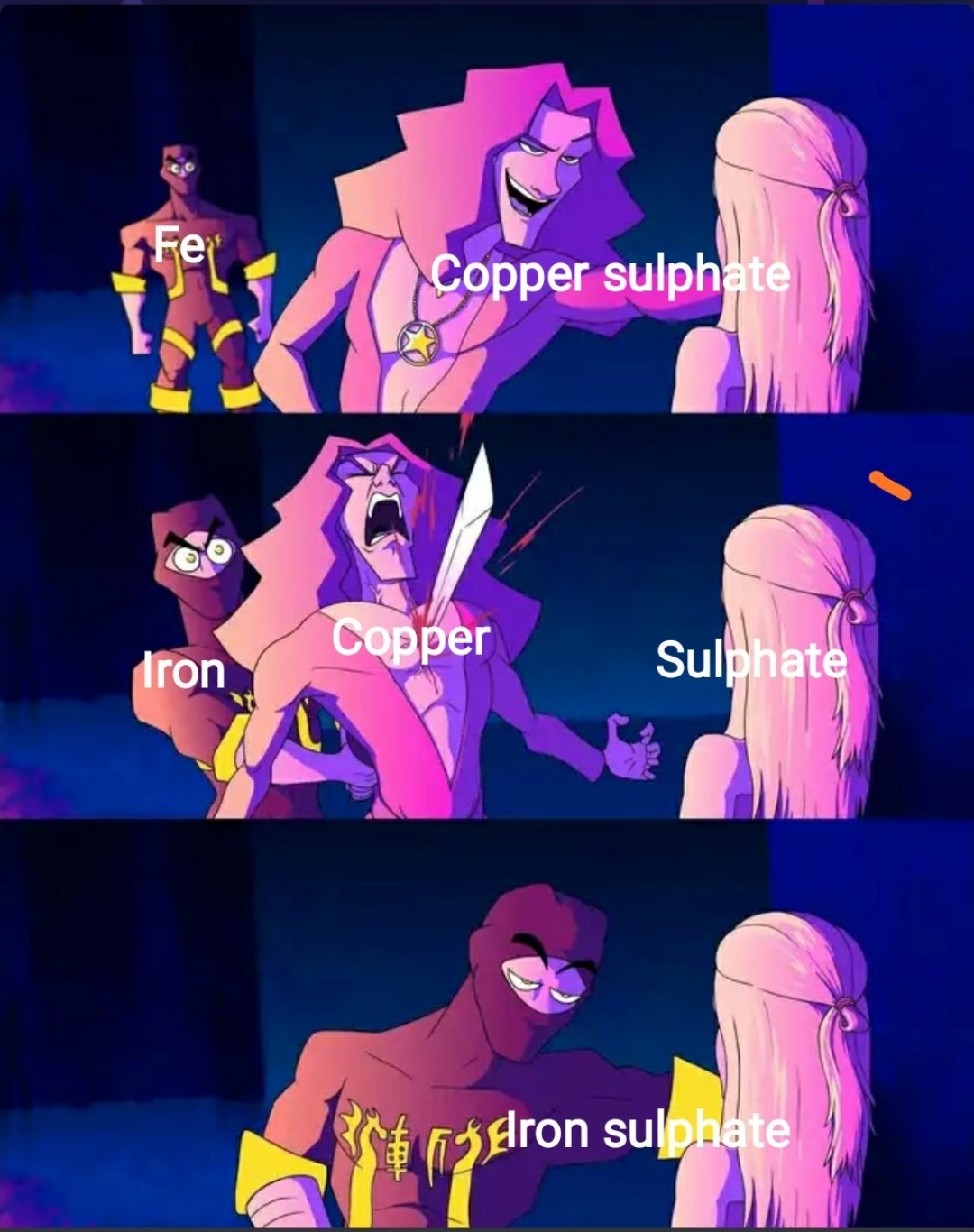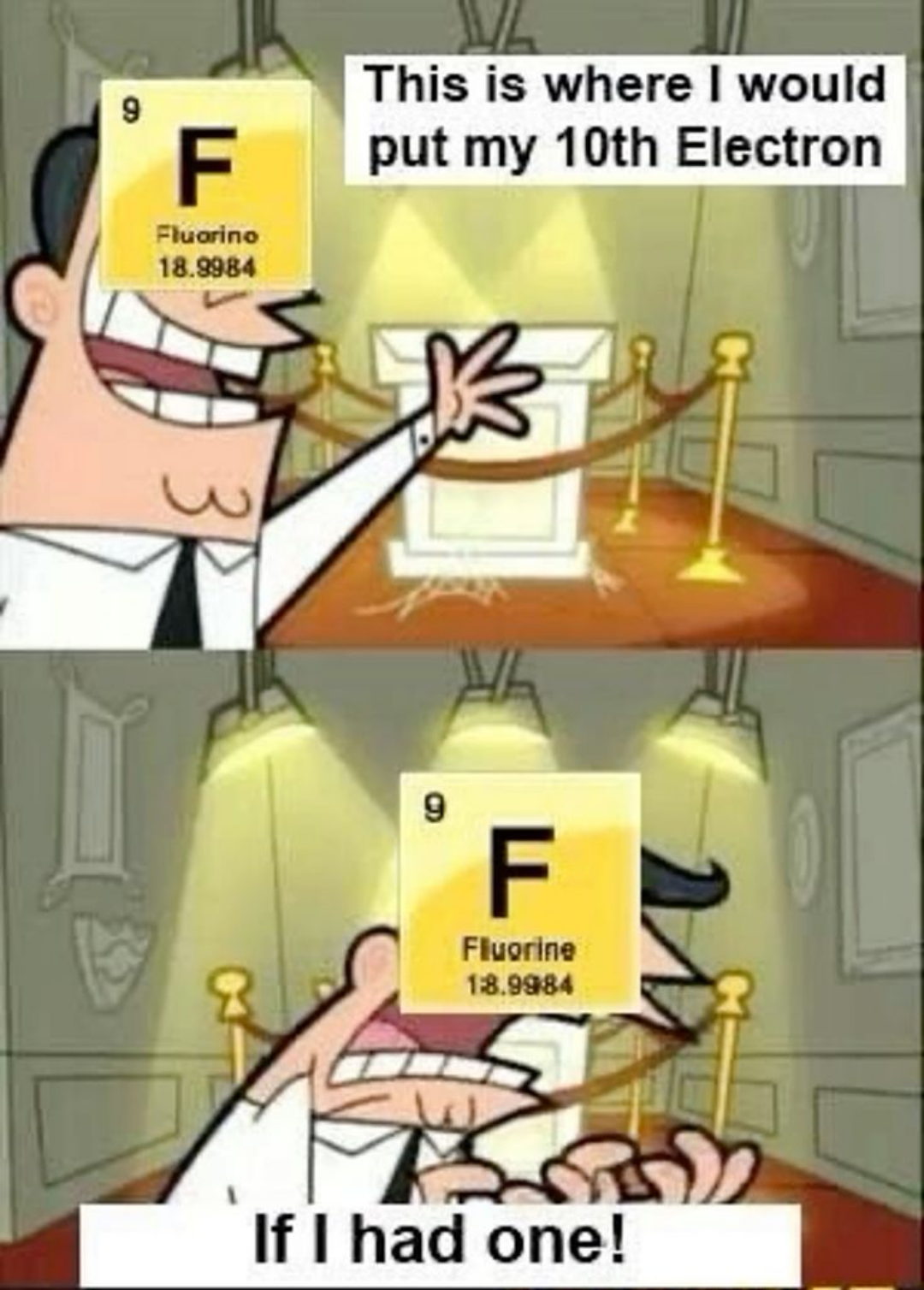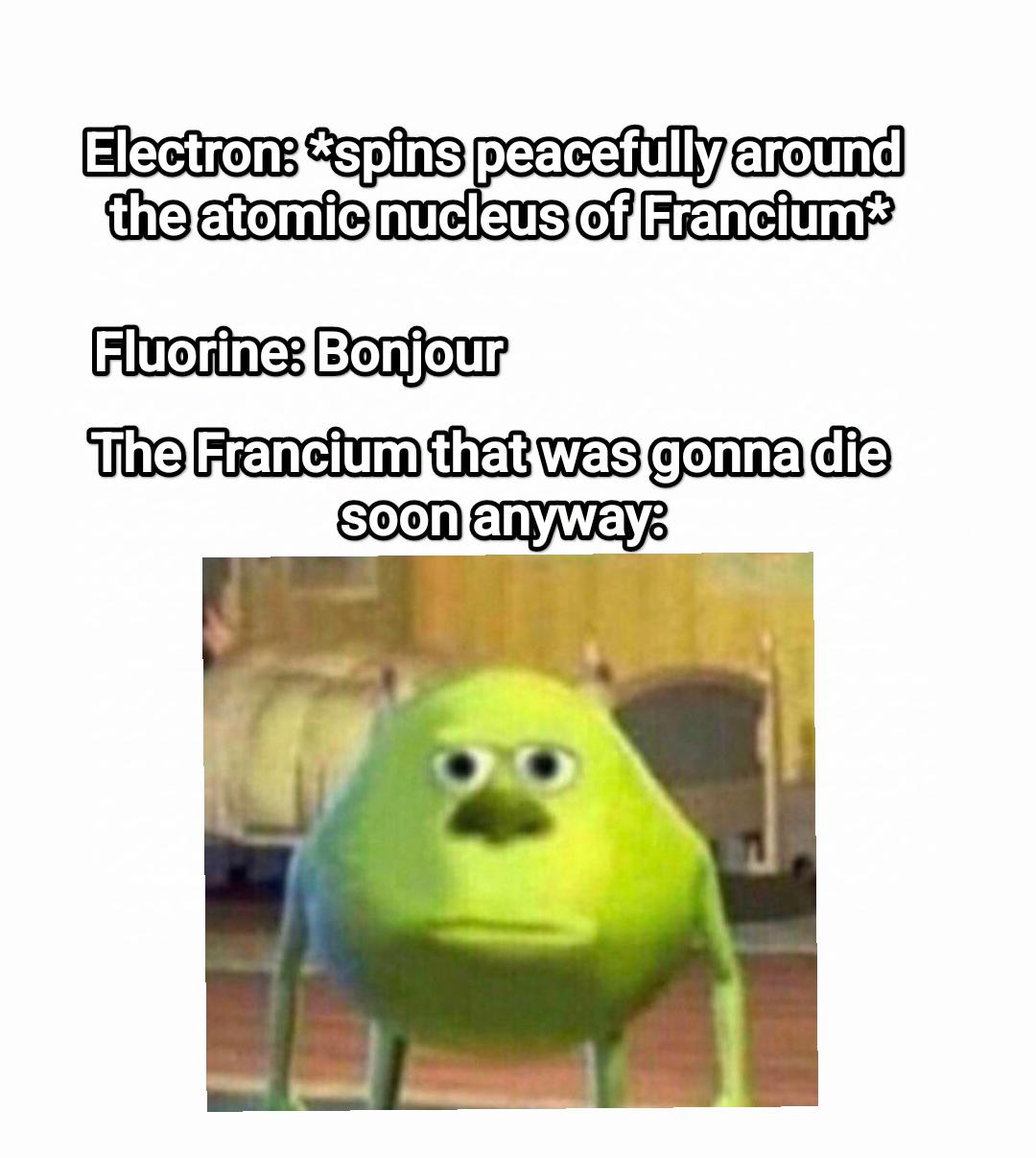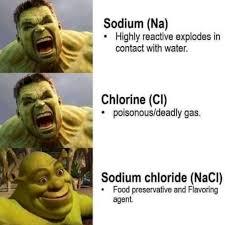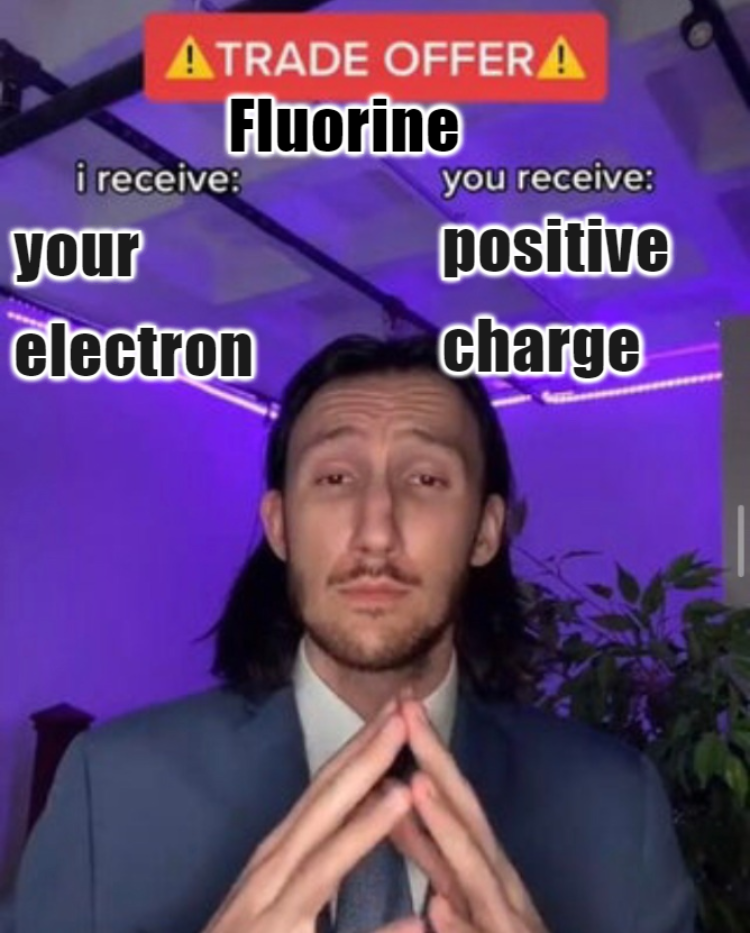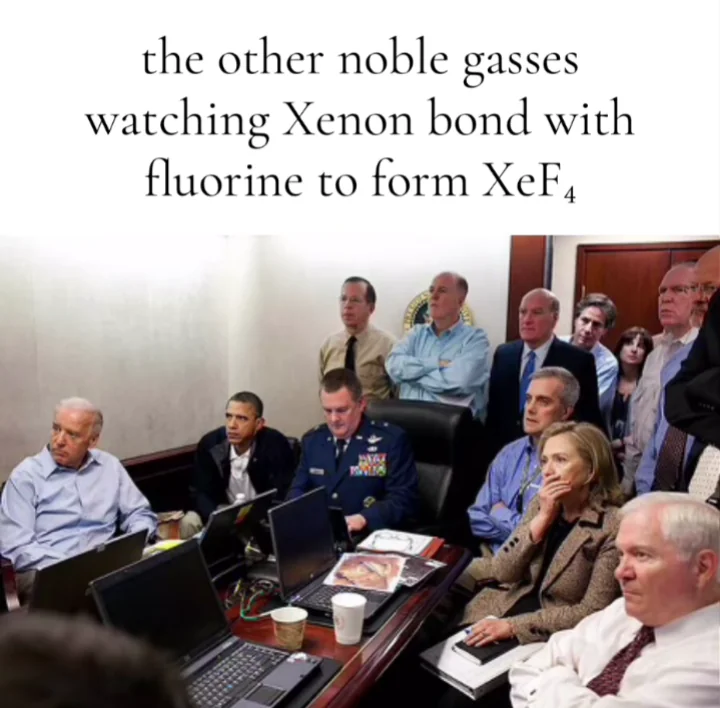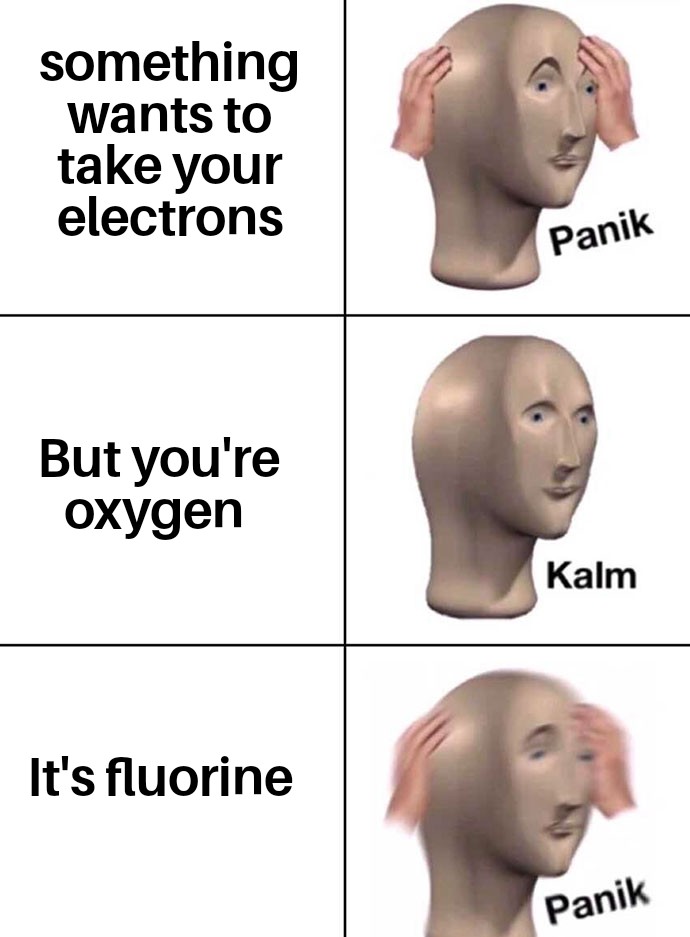Batman sitting by the water labeled as "Cu" (copper) is the perfect punchline to those displacement reactions. No matter which metal tries to show off—iron, zinc, or magnesium—copper gets kicked out of its sulfate compound and just chills. It's basically chemistry's way of saying "I'm Batman" after every reaction. The more reactive metals do all the work displacing copper, and there it sits, unbothered with a drink, watching the chemical chaos it left behind. Just another day in the reactivity series hierarchy.


 Academia
Academia
 Ai
Ai
 Astronomy
Astronomy
 Biology
Biology
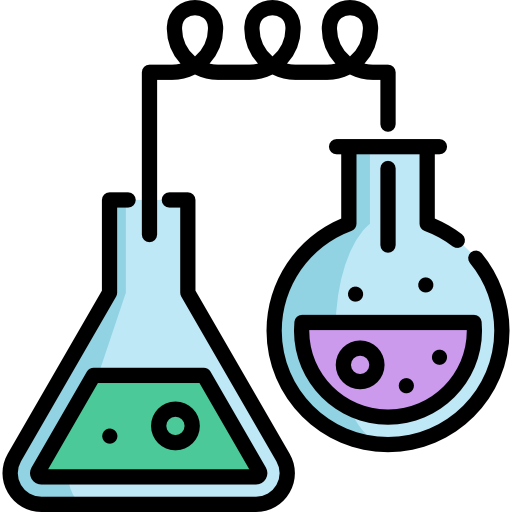 Chemistry
Chemistry
 Climate
Climate
 Conspiracy
Conspiracy
 Earth-science
Earth-science
 Engineering
Engineering
 Evolution
Evolution
 Geology
Geology
